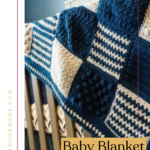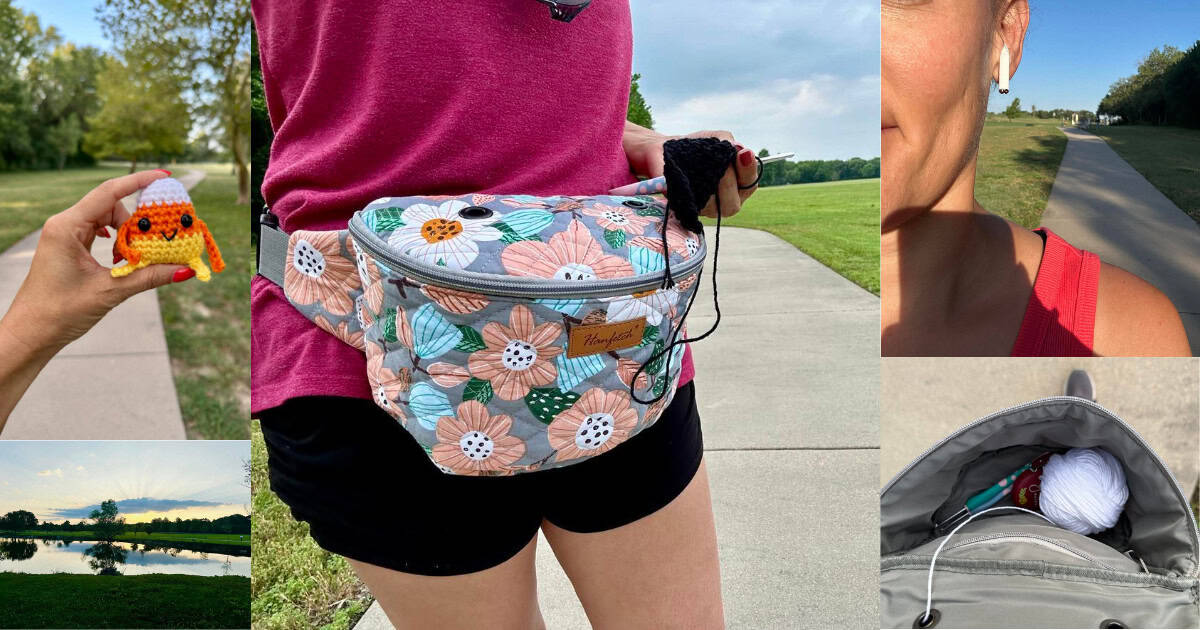Creighton’s Blanket Pattern: Part TWO
This post may contain affiliate links, meaning that I may earn a small commission if you make a purchase. See our disclosure policy for more information.
Are you ready to finish your version of Creighton’s Blanket? I sure hope so! In part TWO of this blanket pattern we compile the squares, then add the border. This crochet stitch sampler blanket is so fun to make and we are so close to being done!

Creighton’s Blanket Pattern: Part TWO
First things first, make sure that you have the correct number of squares for your desired blanket size. I am making the “small throw” size which consists of 56 squares. Since there are seven square patterns, I decided to do eight of each square pattern, four of each color. Find all of the square patterns in part one. If you need help reading a crochet pattern, make sure you head over here and check out this detailed post.
Block the Squares
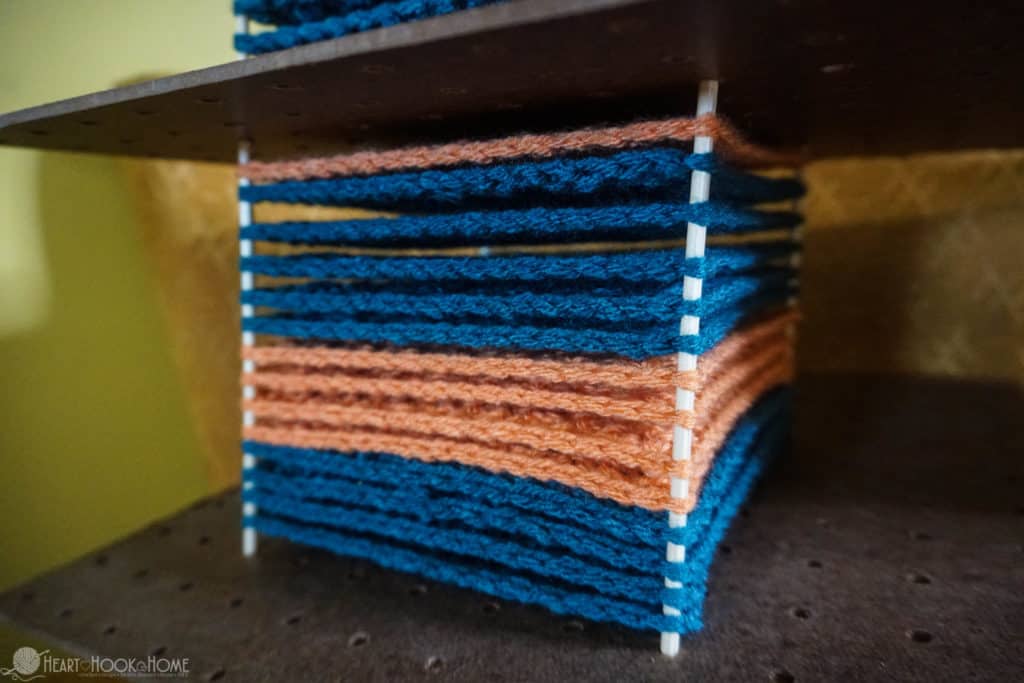
Perhaps the most tedious/boring aspect of any crochet project is blocking. Blocking is an important step though, as it helps to ensure that each square is the same size and dimension even if the stitch counts are different (which, of course, ours are). Here’s a tutorial for blocking crochet. No one will call the cro-po (crochet police) on you if you don’t block the squares, but consider this fair warning that the finished result may be a bit wonkier if you don’t.
Decide lay out of squares
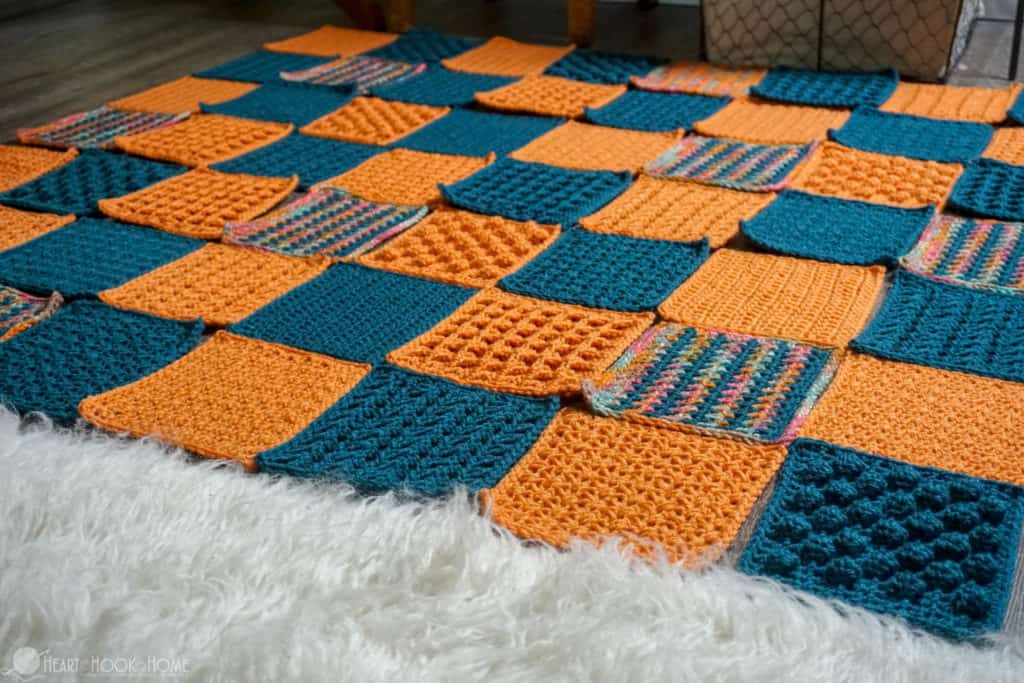
Once you have the desired number of squares completed, and blocked, it is time to decide how they will be positioned. To do this I stacked the squares according to the stitch used, then made sure to pull evenly from each stack as I played with the layout of the squares making sure not to place two like squares directly next to one another.
This may have been my favorite part of the blanket! I do recommend looking closely at each square as it is placed to make sure it is not sideways or upside down.
Tip for sewing squares together
Before we discuss the different means used to sew the squares, one thing I strongly advise, no matter the method, is to not sew together too tightly! Stitching too tightly will cause the seams to pucker and may result in the finished squares having a “poufy” appearance. If you are using the Mattress Stitch, you will need to remain very aware of how tightly you sew, if you are using the slip stitch method, I recommend going up a hook size – or even two!
I can not stress enough the importance of staying LOOSEY GOOSEY while attaching the squares.
Mattress Stitch or Slip Stitch?
Next, you will decide HOW you will sew the squares together. I’ll show you the difference…
You will notice that since we used different stitches, and a different number of rows for each of the square patterns, the stitch counts are not all the same. AND THAT’S OKAY! There is a trick to keeping the seams as flat as possible: stitch markers!
On the edges to be sewn, use stitch markers to note both the corners and the middle of the squares when laid flat. Use as many stitch markers as needed to make sure both corners line up evenly. No one (not even you!) will be able to tell if you have to skip a stitch on either side in order to make the corners line up, but if you need to skip more than a couple of stitches it is best to space them out along the length of the seam.

In the first rendition of the Creighton’s Blanket pattern (the blue and silver) I used the Mattress Stitch and needle and yarn to sew my squares together. I simply worked with the squares as they were laid out, right sides facing up. Start from the bottom of the blanket and work your way up an entire row, sewing back and forth securing the edges together. Add the next vertical row and then the next, all the way to the end. When all vertical edges are seamed, turn the work clockwise and sew up the horizontal edges.
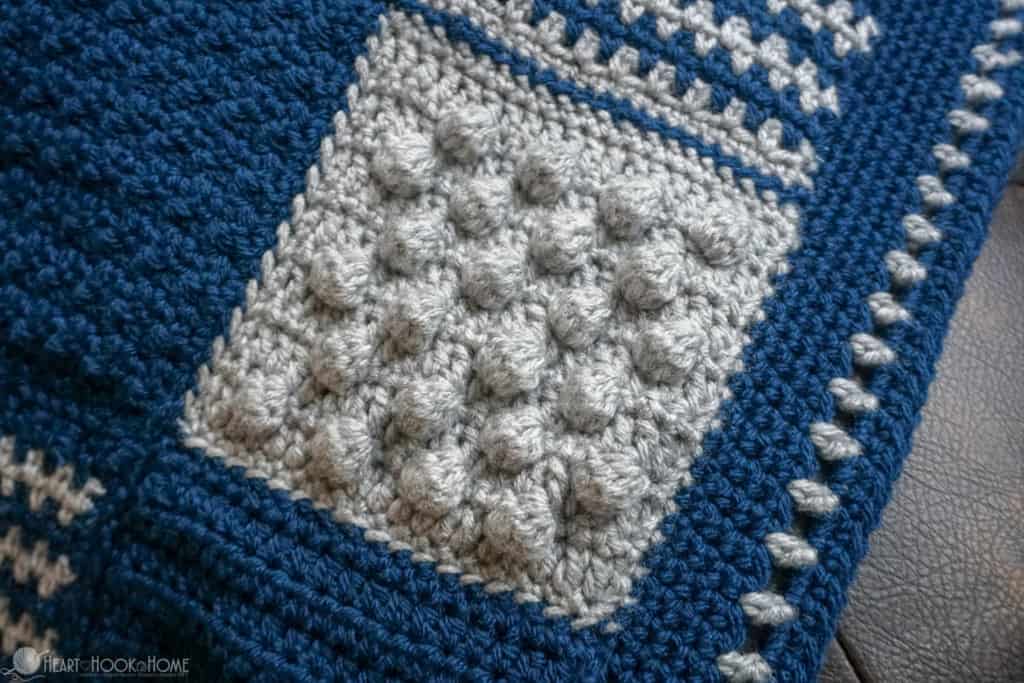
The other method is the slip-stitch-outside-loop method. This is certainly faster but there is a learning curve! Here is the top side:
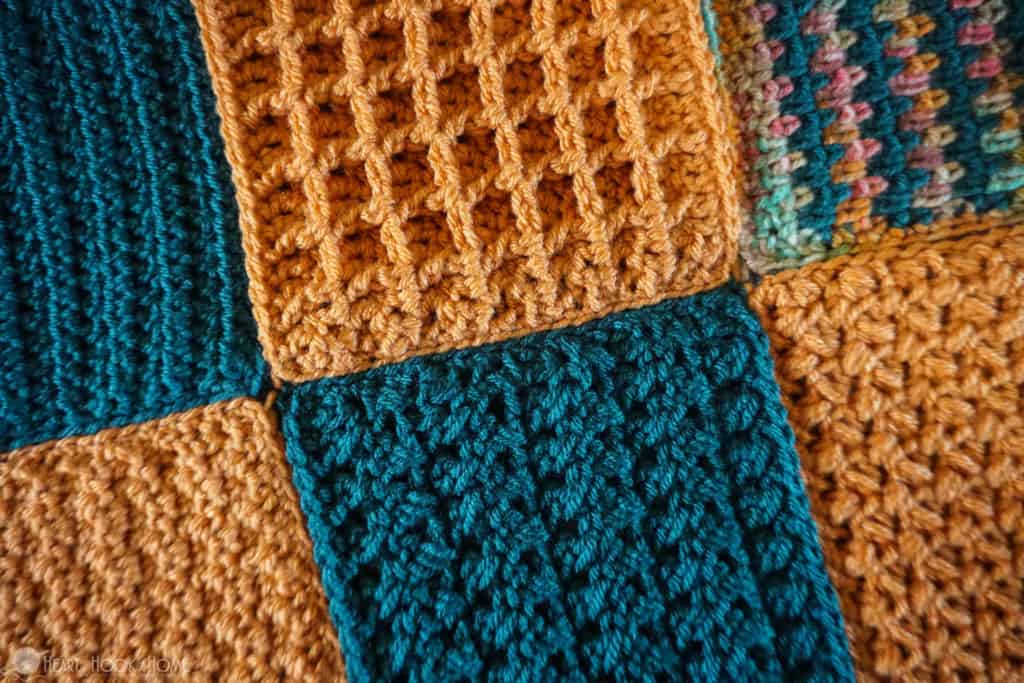
And here’s the back side:
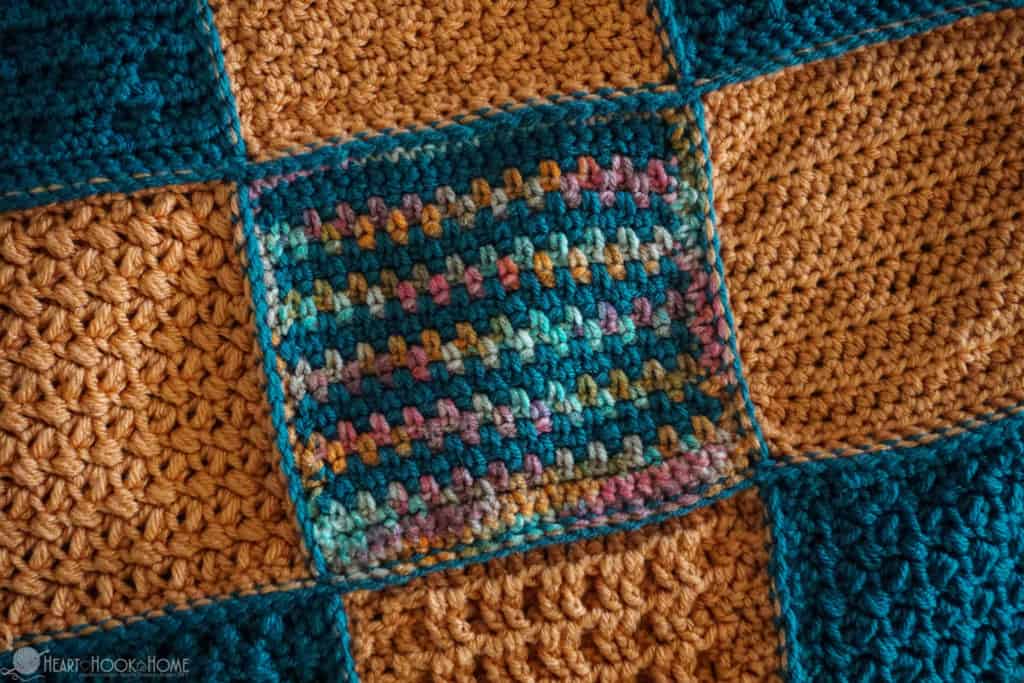
To do the slip-stitch-outside-loop method of joining, lay the squares together with the right sides facing each other as pictured. Use the stitch markers to keep the edges even as described above.
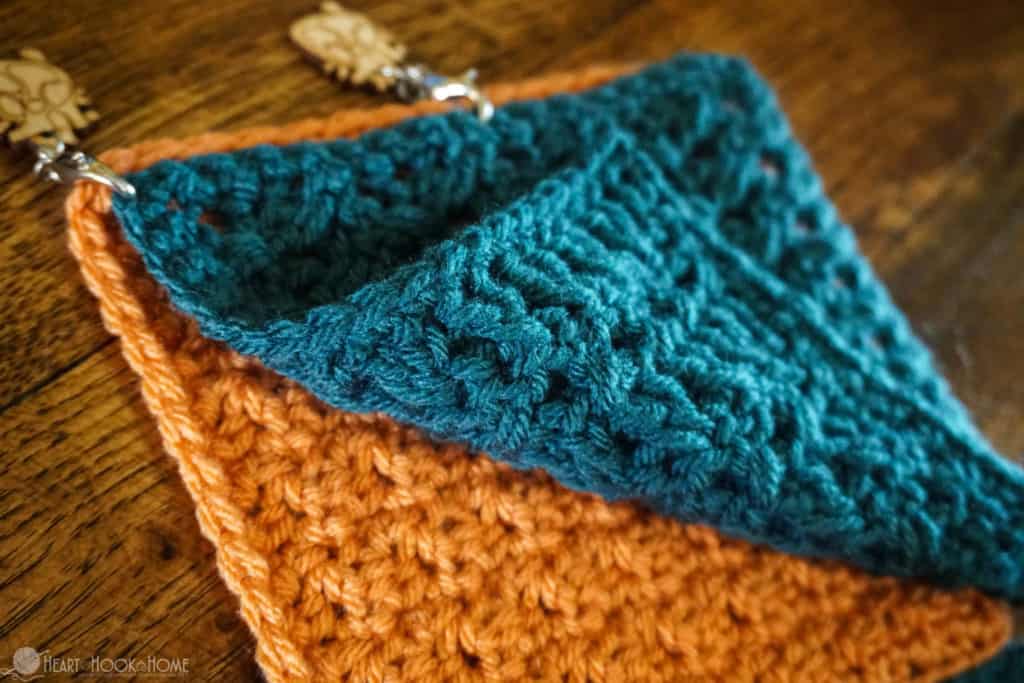
Insert your hook in the outer corner using ONLY the OUTSIDE loops of each.
Wanna save this for later?

Slip stitch along the length of the edge using the OUTSIDE loops only, making sure that when you get to the middle stitch markers everything is still lined up. Remember that if you need to skip a stitch on either square to keep them lined up – that’s okay!

At the end of these two squares grab the next two in the sequence and place them right sides together. Use the stitch markers to line up the edges as before and continue slip stitching until you reach the top of the row.

Again, make sure that when you get to the “middle” stitch marker that the stitches are lining up nicely before moving on.

Once all vertical rows have been seamed, flip the blanket so that you are looking at the wrong side, turn it clockwise, and seam up the horizontal edges. Make sure that all stitches at the intersections have been worked.
To be honest, both methods worked up beautifully. Slip stitching the squares together is definitely the easier (and the faster) of the two methods. I recommend testing different seams with the different methods before deciding. You do what is most comfortable for you, just remember to keep it loose!
Adding the border
Adding the border is the last and perhaps the easiest step of the entire blanket pattern.
Row 1: Attach at any corner. Ch-1, sc in each st around, placing 3sc in each corner. Join with sl st to first sc.
Rows 2 – 6: Ch-1, sc in each st around, placing 3sc in each corner. Join with sl st to first sc.
Row 7: Change to accent color. Ch-1, * Hdc in next, ch-1, sk next st * repeat between * * to corner, hdc in next to last st, ch-2, sk next st, hdc in next. Continue to next corner, hdc in next to last st, ch-2, sk next st, hdc in next. Continue around entire blanket. Join. (It’s okay if you have to fudge a bit to get the corners right – no one will know).
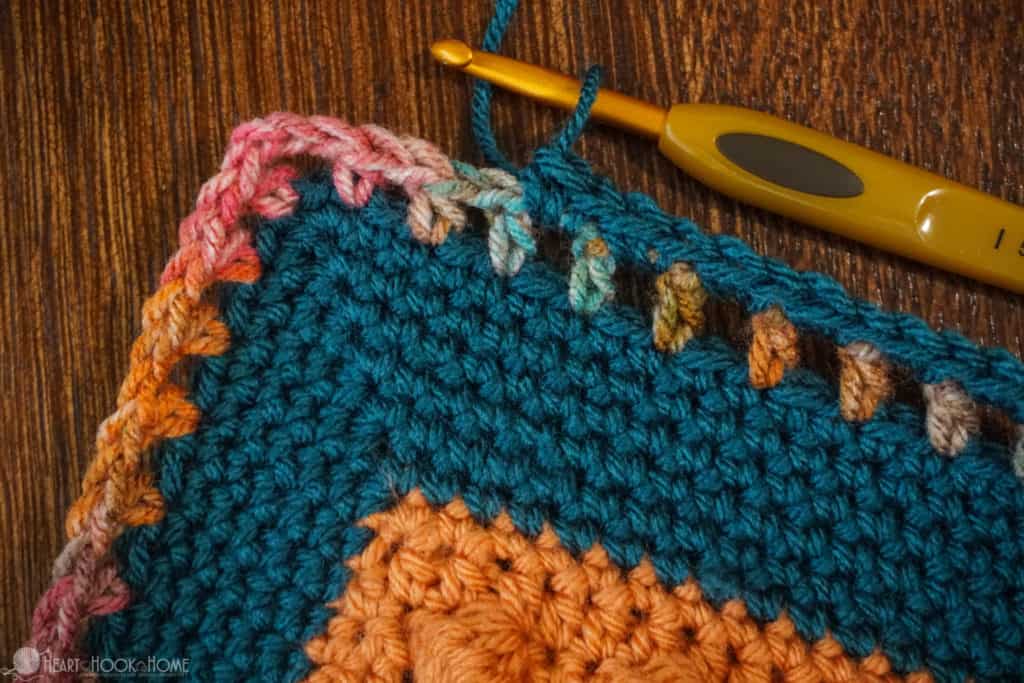
Row 8: Change back to main border color. Ch-1, 2sc around each ch-sp from row 7, placing 3sc around each corner ch from row 7. Join to top of first sc with sl st.

Rows 9 – 10: Ch-1, sc in each st around entire blanket, placing 3sc in each corner. Join to top of first sc and weave in ALL ends.
YOU. ARE. DONE!

I learned a lot with Creighton’s Blanket pattern, and I hope you have learned a lot making yours as well! I always try to come up with new and exciting projects, introducing new techniques and and skill-sets along the way. You never know what is coming next! 😉
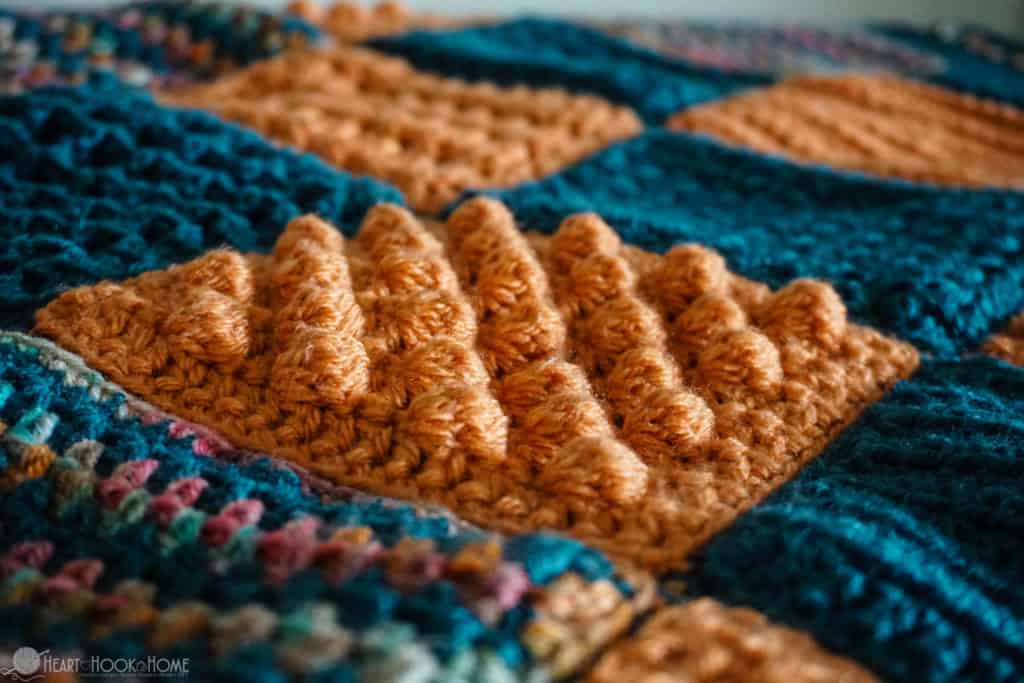
When you finish your version of Creighton’s Blanket pattern, I would love it if you would tag me with @HeartHookHome on social media so I can see! Grab the ad-free, printable version of this pattern on Ravelry or Etsy. Thank you!
More fun crochet projects:
Penelope the Pin Cushion: Octopus Crochet Pattern
Sunday Ballet Slippers Free Crochet Pattern
12 Month Infant Hoodie Free Crochet Pattern
Jack Sparrow Inspired Halloween Beanie Free Crochet Pattern
Aldi Quarter Keeper {FREE Crochet Pattern}

